Last updated: April 17, 2023
Article
Volcanic Necks and Plugs
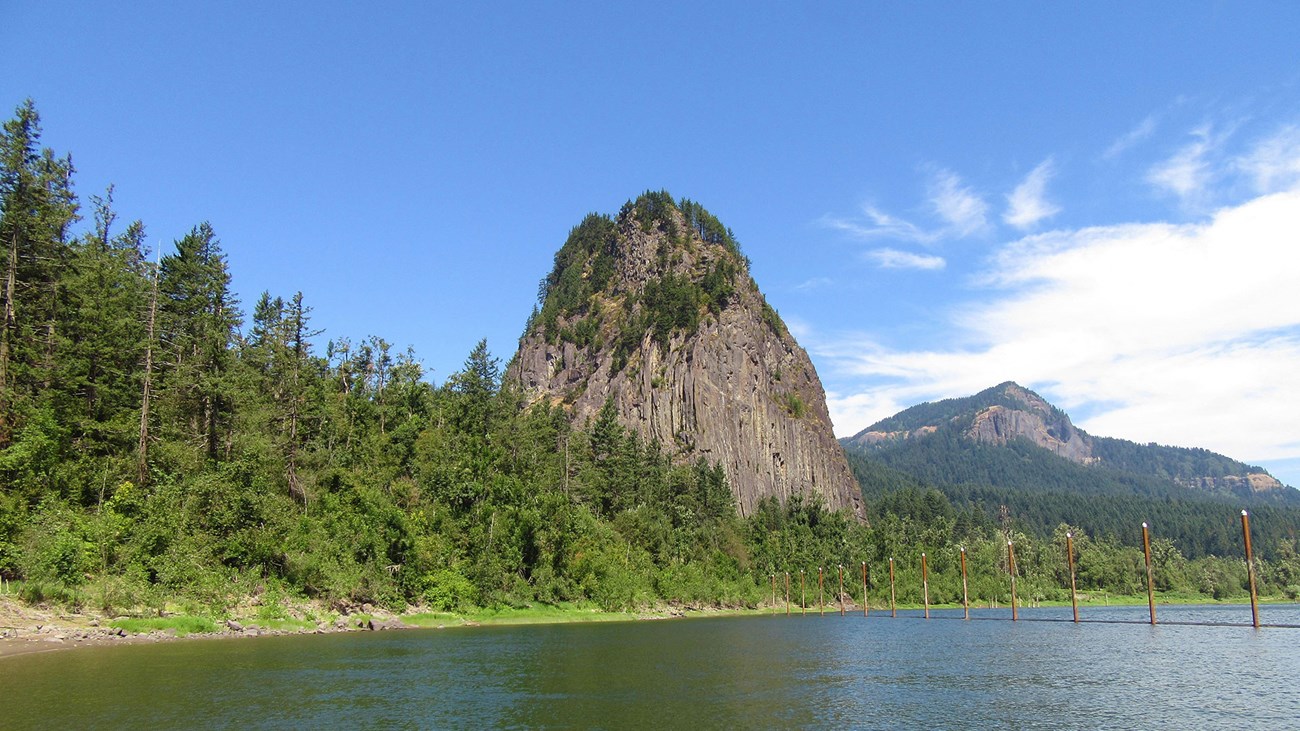
NPS photo.
Introduction
Volcanic necks and plugs are the solidified remains of volcanoes’ conduit and plumbing systems that remain after the rest of a volcano has been eroded away. Solidified conduits are usually more resistant to erosion than the surrounding volcanic edifice which may have consisted of loose tephra or hydrothermally altered rock.
No real differences exist between volcanic necks and plugs. Both are roughly cylindrical in shape and stand out in relief about the surrounding countryside. They appear as vertical pipelike bodies of dense rock that can form rock pinnacles or spires that may stand up to hundreds of feet (meters) in height.
Sometimes systems of radial dikes that were also part of the volcano’s plumbing system are found in association with volcanic necks.
Technically, volcanic necks and plugs are intrusive because they consist of rock that solidified within the Earth. But they were once part of volcanoes and solidified at very shallow depths, potentially even ascending to the level of the former eruptive vent.
National Park Volcanic Necks or Plugs
At least ten units of the National Park System contain volcanic necks or plugs.
Big Bend National Park
Volcanic activity took place in the Chisos Mountains in Big Bend NP during the Cenozoic. Several features which are likely volcanic necks are found in the park.
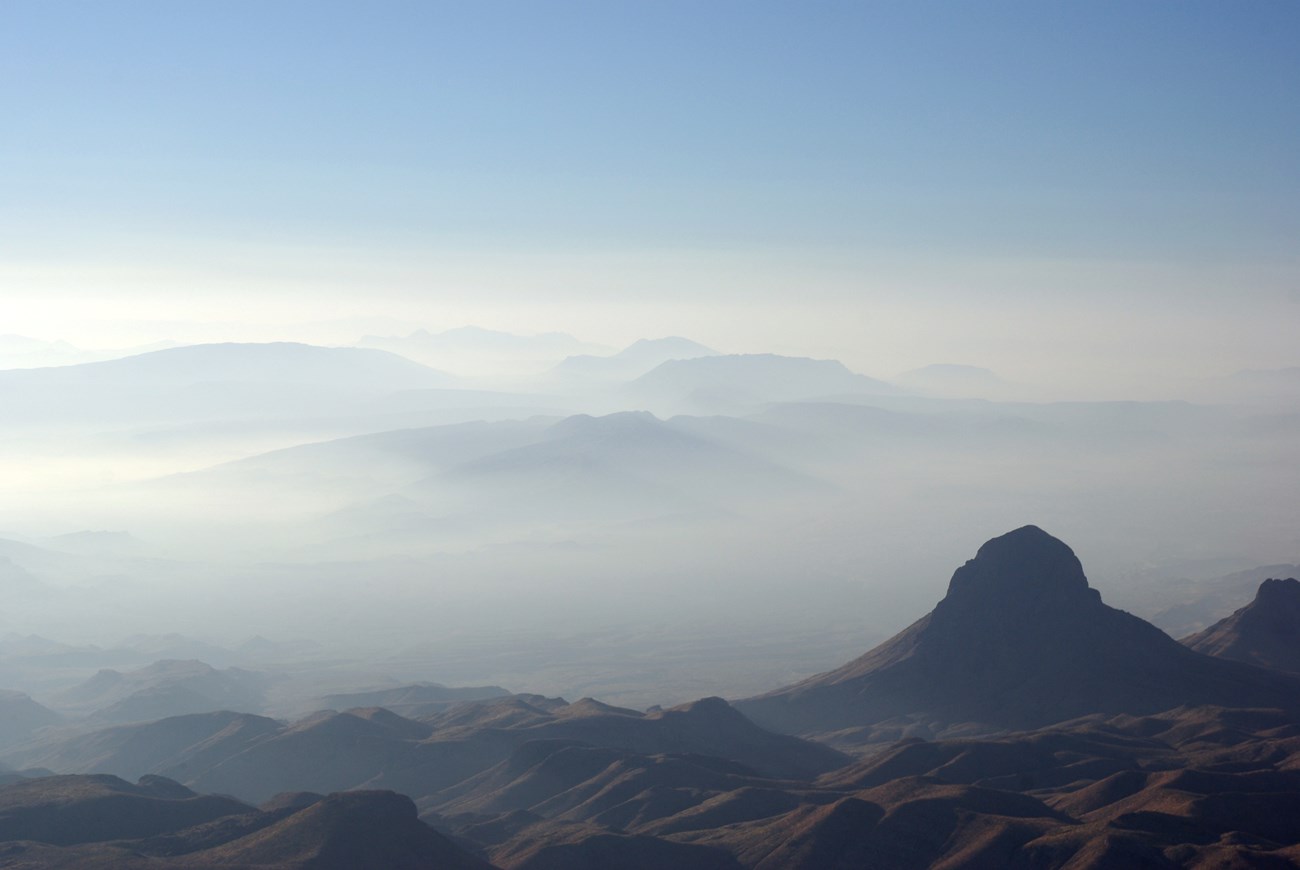
Photo by Adam Baker. CC by 2.0 attribution.
Devils Tower National Monument
Devils Tower is an enigmatic feature whose origin is not completely understood. The tower stands about 867 feet (265 m) tall and formed about 40.5 million years ago. Devils Tower may be the result of a shallow intrusion, or it may be a volcanic neck. One hypothesis is that is the remnant of a maar-diatreme volcano.
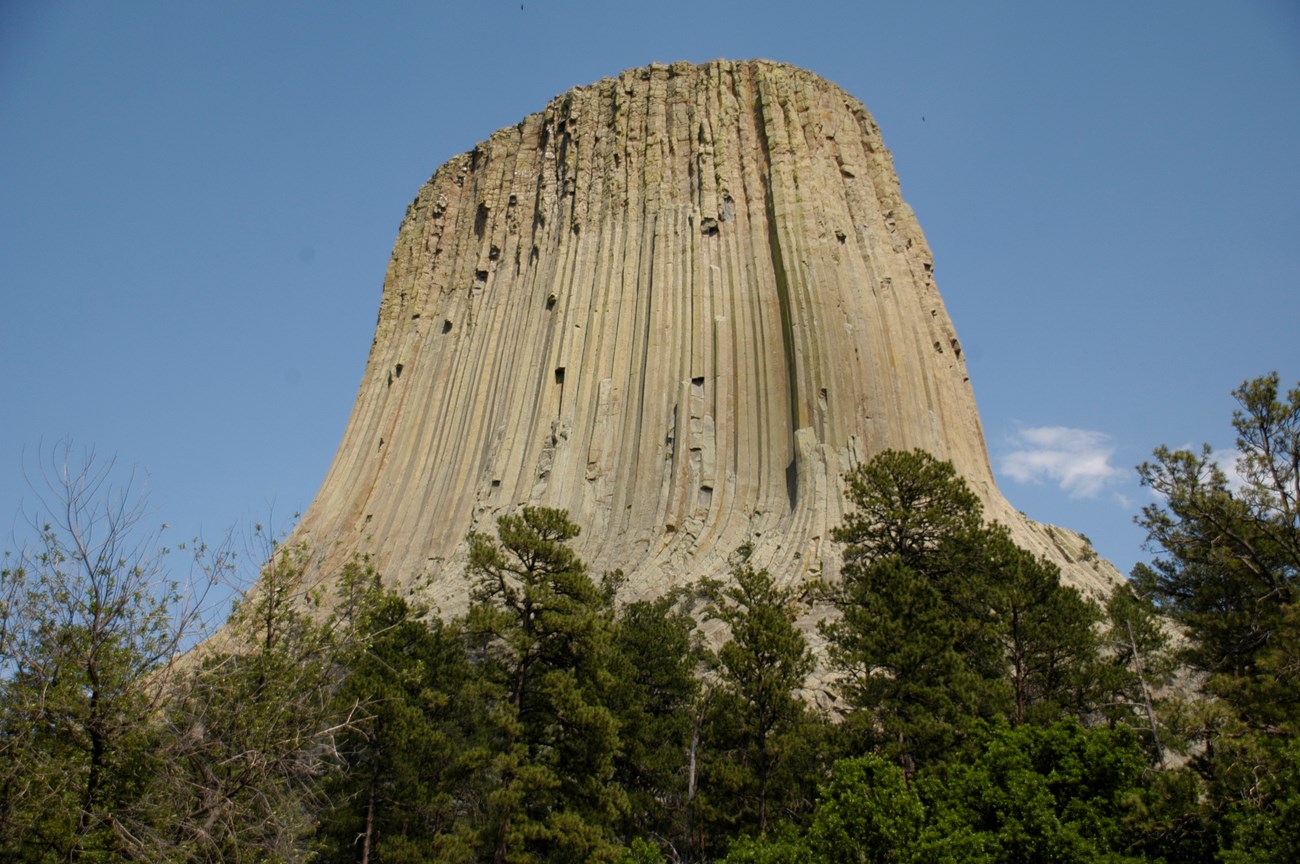
NPS Photo.
Learn More
Grand Canyon National Park
Volcanic eruptions occurred in the western part of Grand Canyon between about 75,000 and 725,000 years ago. One imposing volcanic neck even sticks above the Colorado River just above one of the most difficult rapids in the entire canyon.
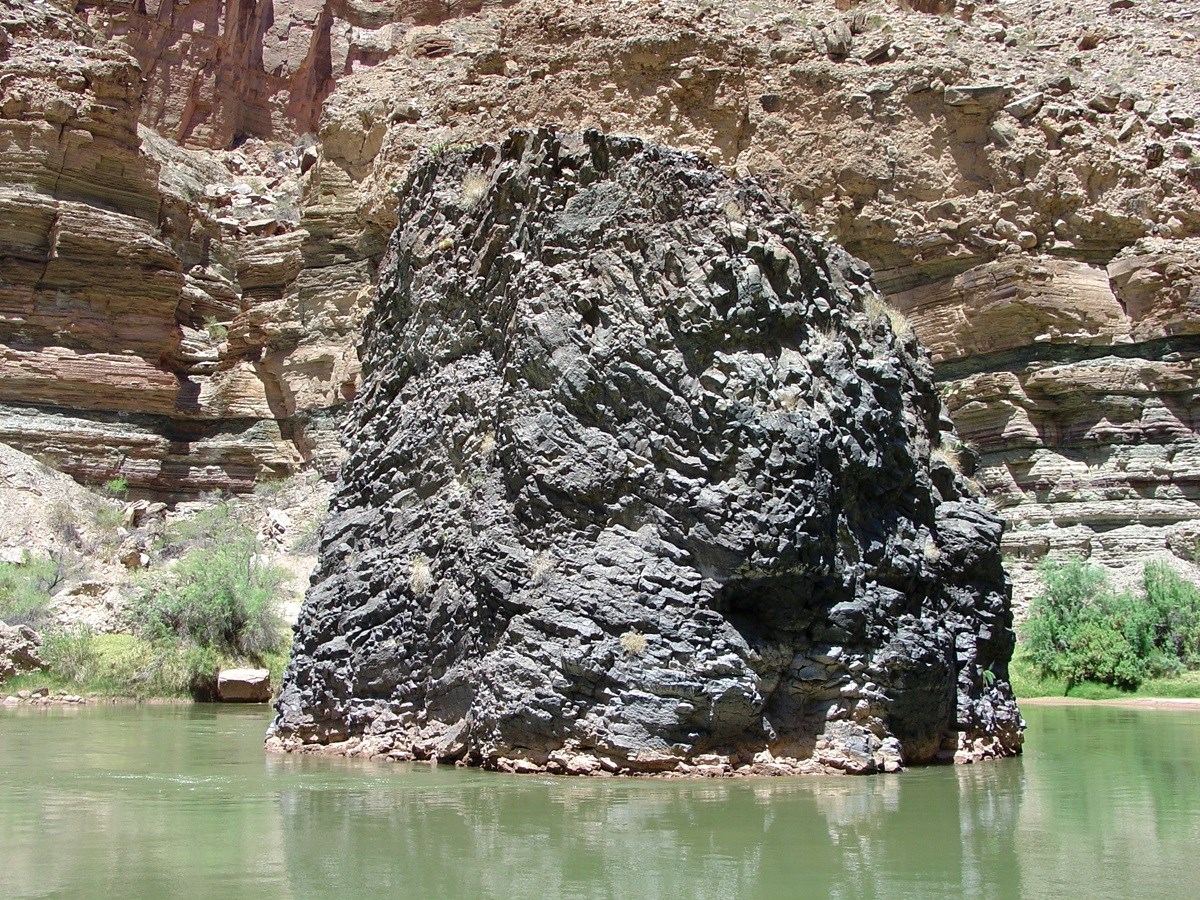
Public domain.
Grand Canyon-Parashant National Monument
The oldest volcanic activity that occurred in Grand Canyon-Parashant NM occurred in the Grand Wash Volcanic Field. It was active approximately between 4 and 6 million years ago.
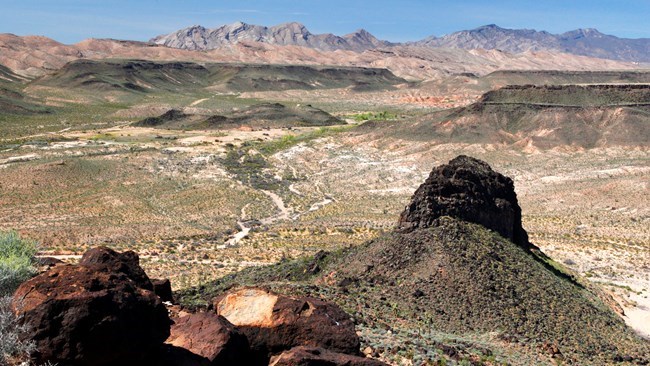
NPS photo by J. Axel.
Katmai National Park
Devils Desk is a volcanic neck in Katmai National Park. Erosion has removed most of the composite volcano leaving only the conduit and radial dikes. The volcano was active nearly 250,000 years ago.
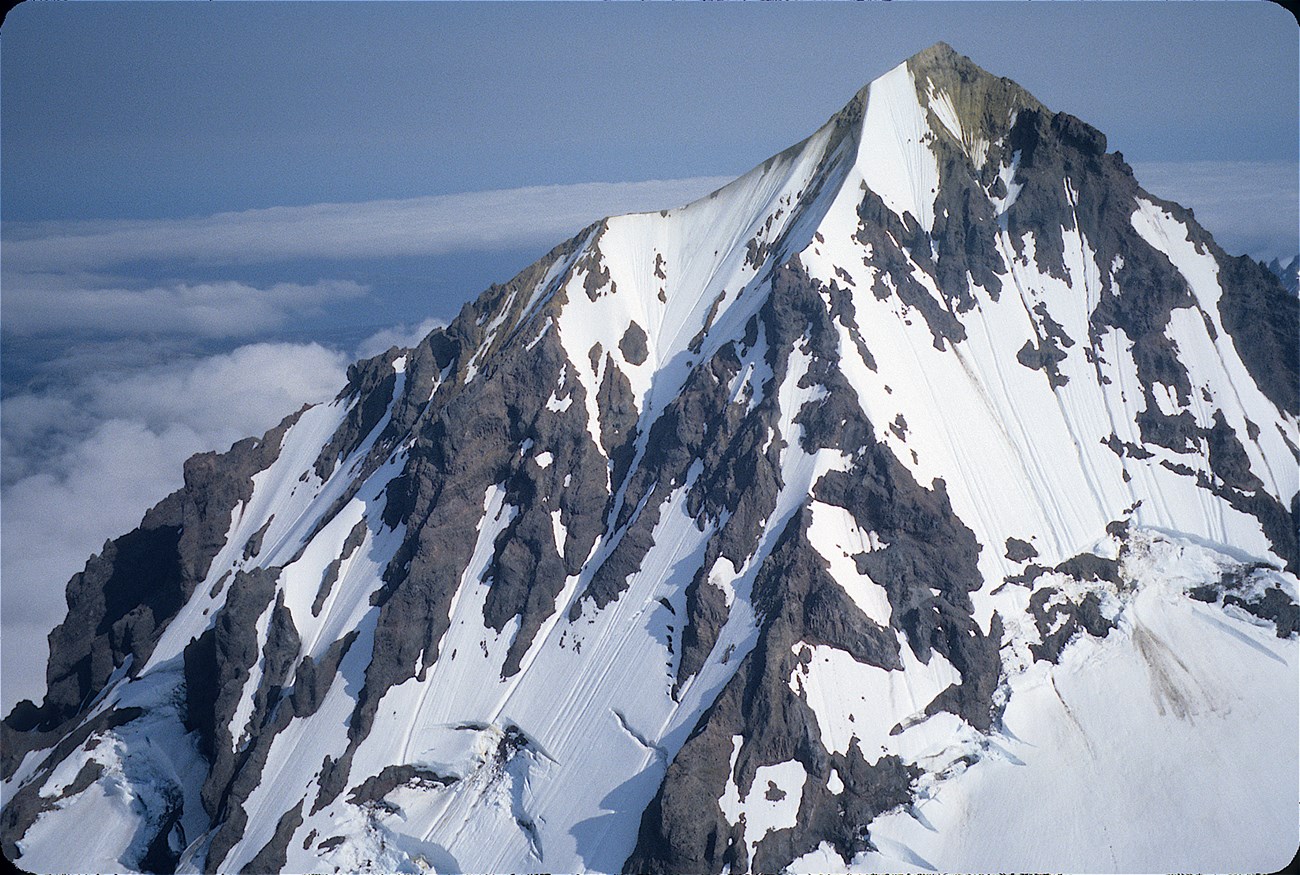
USGS/AVO photo by J. Fierstein.
National Park Sites with Volcanic Necks or Plugs
-
Big Bend National Park (BIBE), Texas—[BIBE Geodiversity Atlas] [BIBE Park Home] [BIBE npshistory.com]
-
Crater Lake National Park (CRLA), Oregon—[CRLA Geodiversity Atlas] [CRLA Park Home] [CRLA npshistory.com]
-
Craters of the Moon National Monument (CRMO), Idaho—[CRMO Geodiversity Atlas] [CRMO Park Home] [CRMO npshistory.com]
-
Devils Tower National Monument (DETO), Wyoming—[DETO Geodiversity Atlas] [DETO Park Home] [DETO npshistory.com]
-
Grand Canyon National Park (GRCA), Arizona—[GRCA Geodiversity Atlas] [GRCA Park Home] [GRCA npshistory.com]
-
Grand Canyon-Parashant National Monument (PARA), Arizona—[PARA Geodiversity Atlas] [PARA Park Home] [PARA npshistory.com]
-
Ice Age Floods National Geologic Trail (IAFL), WA, OR, ID, and MT—[IAFL Park Home]
-
Katmai National Park (KATM), Alaska—[KATM Geodiversity Atlas] [KATM Park Home] [KATM npshistory.com]
-
Kings Canyon National Park (SEKI), California—[SEKI Geodiversity Atlas] [SEKI Park Home] [SEKI npshistory.com]
-
Lewis & Clark National Historic Trail (LECL), IA, ID, IL, IN, KS, KY, MO, MT, NE, ND, OH, OR, PA, SD, WA, and WV—[LECL Park Home]
Related Links
Tags
- big bend national park
- crater lake national park
- craters of the moon national monument & preserve
- devils tower national monument
- grand canyon national park
- grand canyon-parashant national monument
- ice age floods national geologic trail
- katmai national park & preserve
- lewis & clark national historic trail
- sequoia & kings canyon national parks
- volcanic necks
- volcanic plugs
- volcanoes
- geology
- erosional volcanic landforms
- erosion
